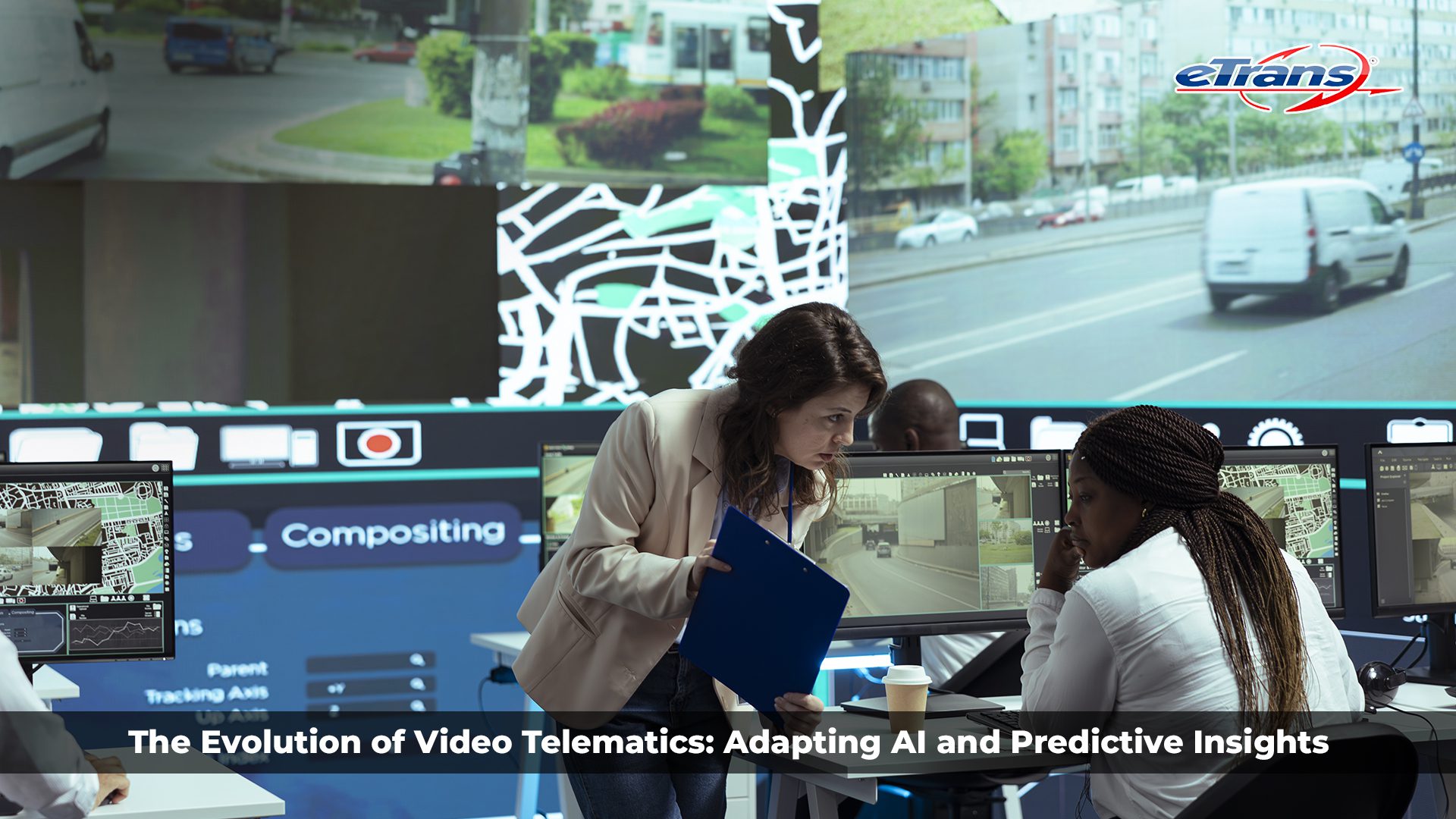Let’s face it. Relying on basic video recorders to manage a modern fleet is like trying to run a marathon in flip-flops. Sure, it might get you to the finish line, but it won’t be pretty, and you’ll definitely miss the pace. Enter high definition video telematics, where the humble video recorder has evolved into a supercharged, AI-powered co-pilot capable of reshaping fleet operations entirely.
In India, where road unpredictability is more common than traffic jams in Mumbai, adopting AI video telematics isn’t just innovative; it’s essential. As the market grows, logistics and e-commerce operators are embracing smart fleet solutions to cut down incidents, reduce operational headaches, and improve compliance.
This blog explores how modern video telematics systems are integrating predictive telematics, edge-based AI digital video recorders, and real-time analytics to not only watch what’s happening but also predict what’s about to happen.
From Video Recording to Dynamic Monitoring
Let’s rewind a bit. Originally, video recorders were nothing more than silent witnesses. They recorded the road ahead, and that was it—no smarts, no sensors, no real-time feedback. If a vehicle got into an accident, you’d dig into the SD card like a digital archaeologist and hope the video was still intact. That was useful but reactive.
Fast forward to today, and those humble beginnings have evolved into fully integrated video telematics systems. We’re now talking about setups where multi-camera fleet monitoring synchronises footage from forward-facing, rear, and in-cabin behaviour monitoring cams, combining them with GPS location, vehicle diagnostics, and event-based triggers like hard braking or sharp turns.
These aren’t just cameras anymore. They are data-rich, AI-powered fleet cameras that give you full visibility and situational awareness. You can trace a speeding incident, cross-reference it with video, and see whether it was due to driver error, road condition, or an unavoidable hazard. You don’t just know what happened—you understand why it happened, and even better, you can act on it immediately.
This leap in functionality has transformed video from being just a post-incident tool to a real-time, actionable platform for video-based driver coaching, operational decision-making, and fleet risk reduction. It’s no longer just about recording; it’s about revealing insights, reducing liability, and increasing driver accountability across the board.
AI on the Edge: Smart Detection That Acts Fast
Forget the delay of sending video data to some distant cloud server just to find out your driver blinked too long. Enter edge-based AI Digital Video Recorder, where the magic happens right inside the vehicle. By shifting processing power to the device itself, these systems can detect risky behaviour like lane drifting, yawning, or texting within milliseconds.
Thanks to the in-cabin digital video recorders for risk detection and real-time driver alerts, fleet operators now receive instant feedback that matters. No lag, no waiting—just immediate detection and response. These systems analyse head motions for indications of drowsiness, use AI video telematics to scan for fatigue using eye closure analytics, and even employ haptic fatigue alerts to help drivers regain attention.
What’s really impressive is how multimodal fatigue sensor fusion combines data from cameras, accelerometers, and other onboard devices for higher accuracy and fewer false alarms. This isn’t just smart—it’s safety working in real time.
Predictive Telematics: Fixing What Hasn’t Broken Yet
Let’s talk about how smart your fleet can really be. Predictive telematics goes beyond reacting to issues—it forecasts them before they even exist. By combining data from GPS, CAN-bus diagnostics, video telematics, and even in-cabin behaviour monitoring, the system doesn’t just tell you what happened. It warns you about what might happen.
Imagine it like adding a sixth sense to your fleet. For instance, a sudden increase in vibration picked up through HD digital video recorder telemetry, paired with subtle signs of irregular engine RPMs, might indicate a looming issue with the suspension. Or a spike in lane drifting flagged by AI-powered fleet cameras, matched with blink rate anomalies via eye closure analytics, might mean your driver’s fatigue levels are rising—fast.
Using telematics predictive maintenance, these systems send alerts so you can schedule repairs before breakdowns occur, preventing roadside failures. This proactive maintenance saves money and time and keeps your operations humming smoothly. These days, outsmarting downtime is more important than merely responding.
Seeing the Whole Picture: Multi-Camera Contextual Awareness
A single video recorder can’t give you the full story. That’s why fleets are upgrading to multi-camera fleet monitoring systems that capture every angle—front, rear, side, and cabin. This panoramic coverage is crucial for building complete incident narratives and understanding driver behaviour.
With in-cabin behaviour monitoring, cameras can detect if a driver is distracted, not wearing a seatbelt, or using a phone. Road-facing HD digital video recorder telemetry detects alterations to lanes, sudden stops, and overtaking. Side-mounted cameras cover blind spots, and rear cams help during reversing or tight turns. These cameras work in harmony, stitched together by AI-powered fleet camera software that blends views into a cohesive stream.
Some systems integrate ADAS video integration and V2X safety features, giving drivers real-time alerts about potential collisions or pedestrian crossings. Coupled with radar or IoT sensors, they detect vulnerable road users before it’s too late. For coaching, managers can replay footage in video-based driver coaching sessions to show what went wrong and how to improve, turning every incident into a learning opportunity.
In short, it’s no longer just about seeing—it’s about understanding and acting with context and clarity.
Edge vs. Cloud: Best of Both Worlds
Imagine you’re running a high-speed delivery fleet. You want instant decisions inside the vehicle, but you also need the big-picture insights from your entire operation. That’s exactly why the smartest fleets use a hybrid approach, blending edge-based AI digital video recorder with hybrid cloud video analytics.
The edge handles all the fast stuff—think of real-time driver alerts for sudden lane changes, in-cabin behaviour monitoring, or detecting a mobile phone in a driver’s hand. All of this happens right on the device using edge-based AI to minimise lag. Meanwhile, the cloud crunches the heavier stuff—fleet-wide trends, driver risk scores, and video telematics compliance audits.
This setup is also perfect for privacy-first telematics. Sensitive data stays local unless it really matters, like a sudden braking event. Thanks to 4G/5G-enabled digital video recorders, the cloud doesn’t need everything—just the highlights. So drivers aren’t being watched 24/7, but fleets still get insights that matter.
It’s like having a co-pilot in the cab and a strategist in the cloud—working together to optimise safety and performance.
4G/5G and V2X: The Superchargers
Speed and connectivity are no longer luxuries—they’re necessities in modern fleet operations. 4G/5G-enabled digital video recorders take latency out of the equation, allowing fleets to stream HD digital video recorder telemetry in real-time without buffering, even during high-speed operations. With 4G/5G’s low-latency infrastructure, vehicles can transmit and receive critical data in milliseconds, making incident alerts and driver feedback nearly instantaneous.
Now add V2X safety integration—the ability for vehicles to communicate with each other, traffic signals, and infrastructure—and you’re looking at a connected fleet that doesn’t just respond to danger but actively avoids it. This combination powers features like smart platooning, where multiple vehicles drive in coordination, and dynamic rerouting when road conditions change. It also facilitates real-time hazard broadcasting across the fleet, improving awareness and safety.
This isn’t just evolution—it’s transformation. Together, 4G/5G and V2X are setting the foundation for truly intelligent transportation systems, where predictive insights meet high-speed responsiveness.
Privacy and Compliance: Big Brother or Big Benefits?
There may be concerns about driver monitoring technologies, particularly in regards to privacy. No one wants to feel like they’re under constant surveillance, especially not while navigating city traffic or long-haul routes. That’s where privacy-first telematics strikes the perfect balance. These systems ensure that sensitive footage never leaves the vehicle unless it’s tied to a genuine safety event. There’s no 24/7 spying—just smart, selective monitoring.
To stay on the right side of the law (and your drivers), modern video telematics compliance tools follow strict protocols. That includes encryption standards, time-limited data retention, driver acknowledgement procedures, and role-based access. Alerts get flagged in real time, but only authorised personnel can review the video, and only when necessary.
With India gearing up for tougher data privacy regulations, these built-in safeguards help fleets stay compliant while still reaping the safety and performance rewards. The result? Peace of mind for drivers and peace of mind for operators—no Big Brother required.
The Bottom Line: ROI in Safety and Cost Savings
Let’s talk numbers and common sense. Fleet managers who’ve integrated modern video telematics solutions are seeing measurable results where it counts—on the road and on the balance sheet. With AI-powered fleet cameras and predictive telematics, these systems don’t just reduce risky behaviour—they document, correct, and prevent it. Imagine fewer instances of severe braking, less distracted driving, and quicker reaction times to possible collisions.
Insurance companies love insurance telematics video proof. Crystal-clear footage linked with GPS and sensor data makes claim resolution faster and often cheaper. And with accurate video-based driver coaching, you’ll reduce repeat incidents and boost safety scores across your fleet.
Add to that fewer surprise breakdowns thanks to telematics predictive maintenance, and you’re looking at a fleet that runs smoother, lasts longer, and costs less to operate. It’s not just about surveillance—it’s about strategy. Smart fleets are saving lakhs annually, and that’s the kind of ROI that speaks volumes. On the brighter side, solutions providers like eTrans Solutions are offering top-of-the-line video telematics equipment. Network Video Recorder (optional with ADAS/DMS), Mobile Digital Video Recorder (optional with ADAS/DMS), and DMS are a few to name that will keep the entire fleet and asset management game in perfect sync.
Conclusion
Gone are the days when cameras just recorded. Now, they think. With AI video telematics, fleet managers have an intelligent system that not only captures incidents but also predicts and prevents them. The fusion of real-time driver alerts, in-cabin risk detection, and predictive maintenance analytics means fewer accidents, smarter coaching, and safer roads.
As video telematics continues to evolve with 4G, 5G, edge AI, and V2X, businesses in logistics, delivery, and transport will need to embrace it or risk falling behind. It’s not just about seeing anymore. It’s about knowing—before it happens.
Frequently Asked Questions
1. What is video telematics, and how is it used in fleet management?
It’s a system that combines video footage with sensor and GPS data to improve safety, training, and compliance.
2. How does AI improve video telematics?
AI allows real-time detection of risky behaviour, proactive driver alerts, and predictive insights for maintenance and safety.
3. Is edge processing better than cloud for video telematics?
Edge is faster for real-time alerts; cloud is better for long-term insights. The best systems use both.
4. Are these systems privacy compliant?
Indeed. The majority of systems use encryption, consent, and restricted video uploads in accordance with privacy-first telematics concept models.
5. What are the ROI benefits of adopting video telematics?
Lower accident rates, cheaper insurance, reduced downtime, and better driver training all lead to significant cost savings.



